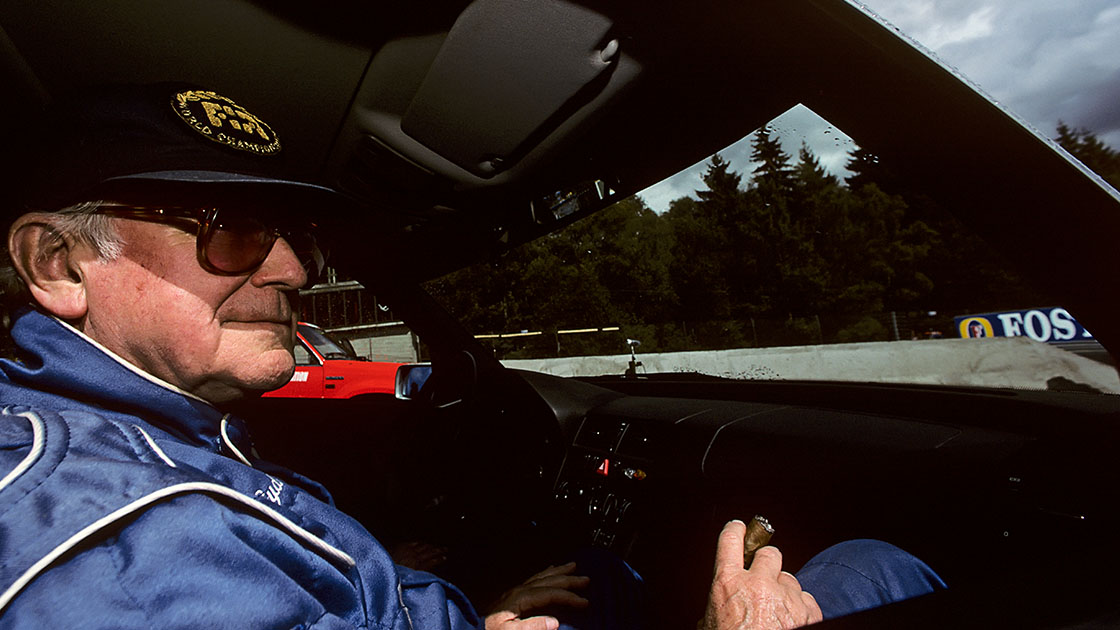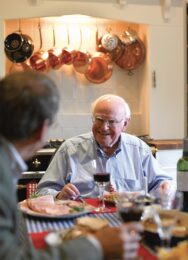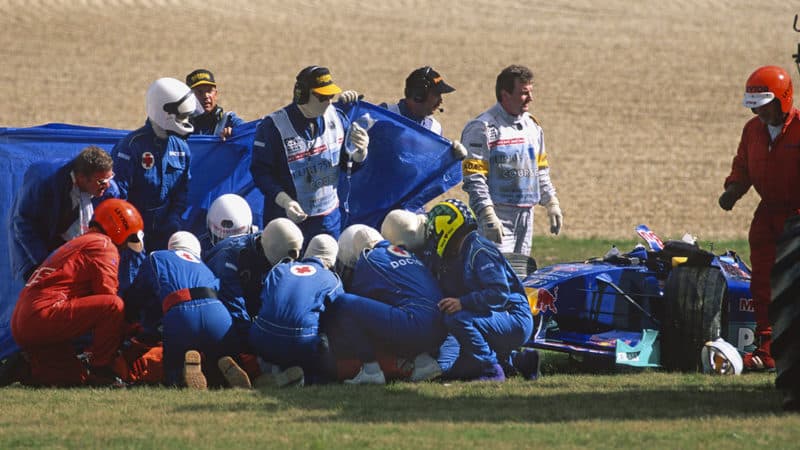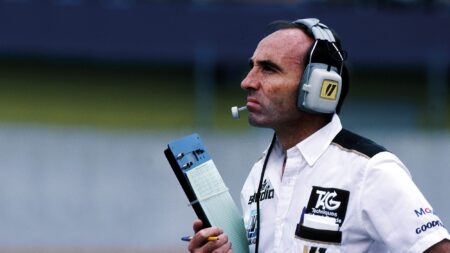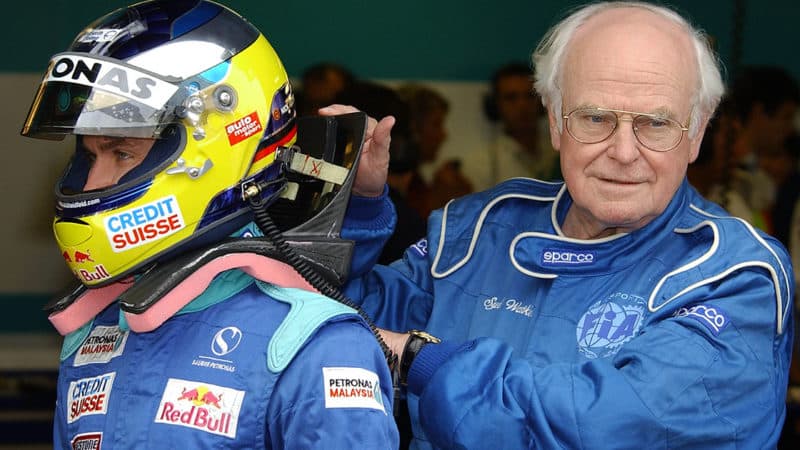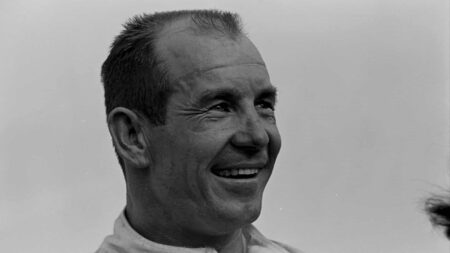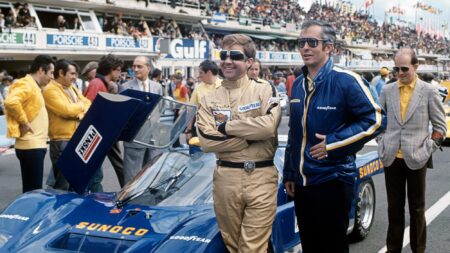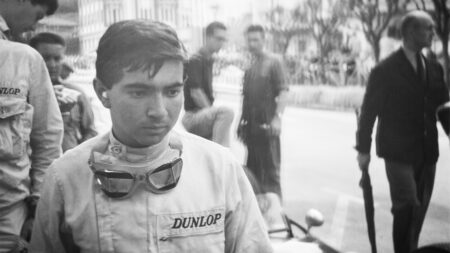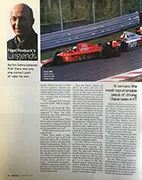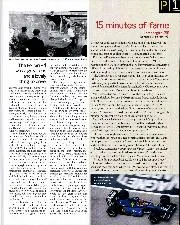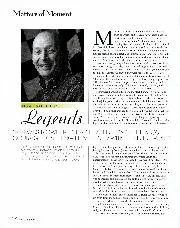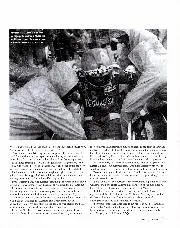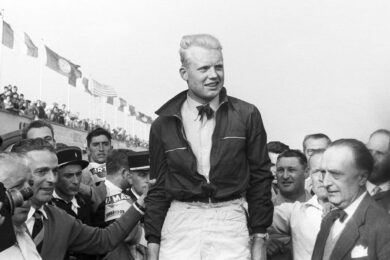“Well, I was chairman of the department so I wrote the rota. There was myself and one other consultant, and we did 24 hours on, 24 hours off and alternate weekends. I did the rota so that I was off for grand prix weekends. I could leave Thursday night and come back Sunday night in time for operating day on Monday. So I’d do 26 weekends on call at the hospital, plus the race weekends. I used all my annual leave for the races, so I basically had no holidays at all.”
For all his eminence in the medical world, Watkins is utterly devoid of pretension. A gregarious man with a marvellously salty sense of humour, he has made countless friends in the sport and loves to talk about them. It was a certainty, for example, that he and Innes Ireland would hit it off.
“Ah, Innes, now there was a man. What a wonderful chap. Very brave — immensely courageous, I think, throughout his whole life, not least with his prostate cancer. He just called it ‘the wicked lurgy’…
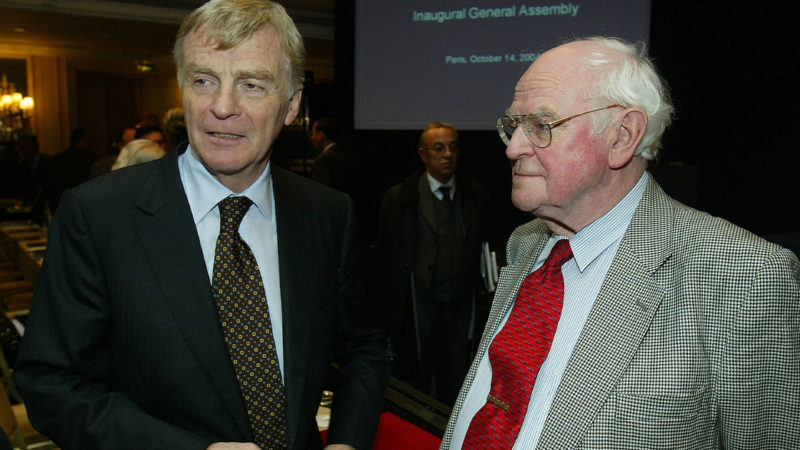
With former FIA president Max Mosley
JEAN MICHEL LE MEUR / DPPI
“I remember leaving Spa one year. Innes and I were both in the paddock car park and he said, ‘What ferry are you on?’ I said, ‘Seven-thirty’ or whatever. He said, ‘I’ll see you there’. And off he went under the tunnel — and on to the very congested road beyond. Took him ages to get to the motorway.
“I knew a trick. I went round the circuit to the medical centre, where the exit road is clear, then went through some back roads, got on the motorway and arrived at Calais well ahead of him. I was about sixth in the queue and, when I’d been there about 20 minutes, in my mirror I saw him stumping down the line. ‘How the f*** did you get here so fast?’
